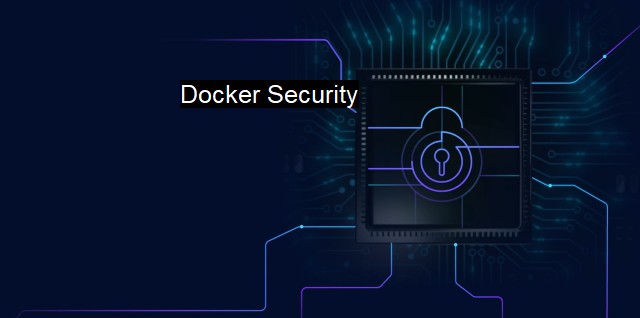What is Docker Security?
Exploring Docker Security: Risks and Mitigations in Container Deployments
“Docker Security" pertains to the measures, practices, and tools that are used to safeguard Docker, a popular open-source platform that automates the deployment, scaling, and management of applications through containerization. it signifies protecting Docker containers against vulnerabilities, misconfigurations, and threats that could potentially compromise the security and integrity of applications and environments deployed within them.Docker enables developers to package an application along with its associated dependencies into a container; essentially a lightweight, standalone, and executable software package, which can run reliably in any computing environment. This modular approach to software development has transformed the way applications are built, distributed, and run. it has also given rise to new security challenges that necessitate specialized strategies and tools, collectively referred to as Docker security measures.
Like every other technology, Docker containers aren't inherently secure. Because containers share the host system’s OS kernel, a vulnerability within one container can compromise the entire host system. Threat actors aware of such vulnerabilities could potentially exploit them, affecting the functioning of other containers within the host or gaining unauthorized access to sensitive data. Hence, securing Docker containers has become a focal point of cybersecurity.
One of the most important facets of Docker security is applying the principle of least privilege, which entails granting only the bare minimum permissions or privileges required for a task. For instance, it's good practice to run containers with the least airtight set of capabilities needed, providing no spare privileges that could be abused.
Another core element of Docker security is maintaining up-to-date images. Docker images, the basis of containers, should be regularly updated and reviewed for vulnerabilities. This is essential because exploitable software flaws often reside in outdated or insecure images. Consequently, security tools like image scanners can provide valuable insight into the existing vulnerabilities and assist in applying timely patches.
Proper management of secrets—sensitive information such as API keys, passwords, or tokens—also plays a crucial role in Docker security. Secrets should never be stored in Dockerfiles or images, but should reside in a secure and encrypted storage guard against unauthorized access.
Network security too plays a non-trivial role in Docker security, given that applications encapsulated within containers often need to communicate over the network. It's essential to tighten network policies, limit container-to-container communication unless necessary, and leverage firewall rules to enhance Docker network security.
When it comes to Docker host security, it's vital to use trusted host operating systems and apply regular security updates. The deployment of advanced monitoring tools can also aid in the quick detection of suspicious activities or anomalies and instant mitigation of potential threats.
Using signed images and verifying the authenticity of images before deployment can provide an added layer of Docker security. Such practices help to ascertain that the containers are derived from trusted sources and have not been compromised or tampered with.
Real-time threat detection and incident response mechanisms are vital as well. A proactive, vigilant cybersecurity approach can help quickly identify and counter malicious activities, thus limiting their potential harm. Tools and services that provide real-time security analytics and threat detection vastly enhance Docker security.
While Docker presents opportunities to revolutionize the deployment of applications, it likewise possibly exposes unwary users to the threats of malicious attacks. The docker security framework integrates several tools and practices designed to mitigate these risks, from network policies to vulnerability scanning. The approach positions security not as an afterthought, but as an integral part of the container lifecycle, aiming for a safer, more reliable operation within the Docker environment. It’s critical that the correct security protocols are in place to defend against the increasingly sophisticated cyberattacks of today’s world. Thus, Docker security stands as a crucial area of focus in modern cybersecurity practice.
Even though Docker's security management is substantially more complex compared to typical host-centric system security, it is unquestionably critical in today's rapid, distributed software development and delivery environments.

Docker Security FAQs
What is Docker security?
Docker security refers to the process of securing Docker containers and the environment in which they run. This involves implementing measures to protect against potential security threats, such as malware and cyber attacks.How can I ensure that my Docker environment is secure?
To ensure that your Docker environment is secure, you should implement a multi-layered approach to security. This includes using anti-virus and anti-malware software, implementing access controls and monitoring tools, and keeping your Docker infrastructure up-to-date with security patches and updates.What are some common Docker security risks to look out for?
Some common Docker security risks include insecure Docker images, unsecured Docker networks, and vulnerabilities in Docker container infrastructure. You should also be aware of the risks posed by third-party Docker images and shared data volumes, and take steps to mitigate these risks through proper security measures.What are some best practices for Docker security?
Some best practices for Docker security include using official Docker images, keeping your Docker environment up-to-date, hardening your Docker host server, and implementing secure login processes and access controls. You should also use secure network protocols, enable container isolation, and regularly monitor and audit your Docker environment for potential security risks.| | A | | | B | | | C | | | D | | | E | | | F | | | G | | | H | | | I | | | J | | | K | | | L | | | M | |
| | N | | | O | | | P | | | Q | | | R | | | S | | | T | | | U | | | V | | | W | | | X | | | Y | | | Z | |
| | 1 | | | 2 | | | 3 | | | 4 | | | 7 | | | 8 | | |||||||